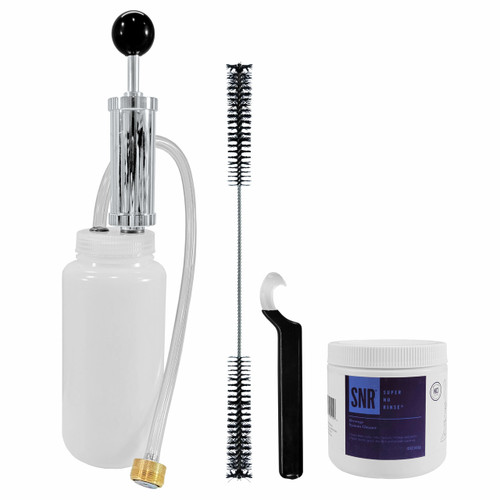Why Is the Beer from My Kegerator Foamy and How do I Fix It?
Posted by Ron on 28th May 2021
Foam isn’t a crime unless we’re talking about beer. When kegerator beer pours foamy, it’s hard to enjoy the real taste of the beverage, plus it’s a sign that something is wrong with your draught beer system.
You need to know how to achieve a foam-free pour with any kegerator and maintain it. Here, the Beverage Craft experts share some useful tips in for a foam-free pour every time.
Why is beer coming out of the kegerator foamy?
Pouring foamy beer out of kegerator requires some investigation and determining the cause to ultimately solve the issue. Below, we have listed the most common causes for pouring foamy beer from a kegerator.
Over-carbonation
One of the most common reasons for kegerator beer pouring foamy is that your keg itself might be over-carbonated. If you're buying commercial kegs, it is not impossible for them to come over-carbonated. This can happen because of different temperature spikes during transportation and storage or a mistake at the brewery.
If you are a homebrewer, letting your keg sit at too high pressure for too long might also lead to over-carbonation.
Wrong temperature
The second most common reason you might find a kegerator pouring foamy would be the temperature of the beer. If your beer gets too warm, foam builds up throughout the pour, so by the time it hits the back of your faucet carbon dioxide is already expanding out of the solution resulting in too much foam.
Dirty beer lines
Another reason why you can get foam in your glass is dirty lines. Sometimes it’s because of improper cleaning, sometimes it’s because they are too old and need to be replaced to prevent further buildup of microbes, beer stone, or other yeast-based sediments.
Beer lines too long
Ideally, the length of your beer line should be between five and six feet. Although, certain variations may apply depending on the style of beer.
Damaged/missing probe washer
A probe washer goes around the inside of the probe that goes up and down. If it’s missing or slightly damaged, this will lead to foam every time.
How to Reduce Beer Foam in a Kegerator?
If it’s your first time dealing with a foamy kegerator, start the troubleshooting process with the usual suspects - wrong CO2 pressure and/or wrong serving temperature.
Different styles of beer require different CO2 pressure. Typically, it should be within the 10-12 PSI range. If it’s too high, you are bound to get your kegerator too foamy. Check the pressure on your CO2 regulator to see if it’s right for the beer you’re pouring.
The same goes for temperature - serving your beer too warm or too cold won’t do it any good. Avoid frosted glasses because coming in contact with a frozen surface only increase the release of CO2 and therefore makes kegerator beers too foamy.
If the CO2 pressure and the temperature check out, inspect your beer lines for any signs of clogging, mold, or any other nasty buildups. If they are indeed dirty, it is better to replace them altogether - it’s not that expensive of a procedure and should be done ideally once a year.
While you’re at it, make sure the length and diameter of your beer line are correct - a beer line should be 3/16 (the skinny type) and 5-6 feet in length for most beers. For a beer like Coors Light, it could be up to 7 feet.
Finally, if all of the above checks out and you still have no answer to the “Why is my kegerator coming out foamy?” question, take a closer look at the beer as it is traveling through the beer line. If you see lots of tiny bubbles in there, you’re most likely dealing with a missing probe washer.
You May Be Also Interested In
- All You Need to Know About CO2 Tanks for Beer Carbonation
- How to Clean Kegerator Beer Lines at Home
- What to do if the beer is pouring foamy, flat, wild, cloudy & off-tasting?




